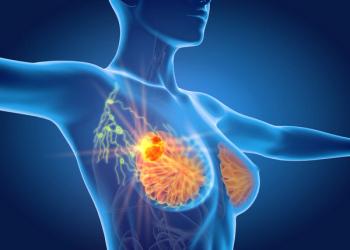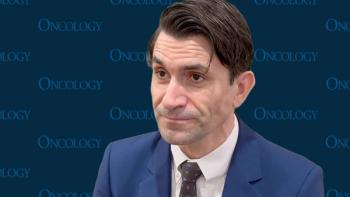
Elderly Lung Cancer Patients Overtreated With Chemoradiotherapy
Elderly patients with stage III non–small-cell lung cancer experience poorer overall survival than patients younger than age 70 years when treated with standard concurrent chemoradiotherapy, according to a pooled analysis.
CHICAGO-Elderly patients with stage III non–small-cell lung cancer (NSCLC) experience poorer overall survival than patients younger than age 70 years when treated with standard concurrent chemoradiotherapy (CCRT), according to a pooled analysis of cooperative group clinical trial data presented at the 2016 American Society of Clinical Oncology (ASCO) Annual Meeting, held June 3–7 in Chicago (abstract
The rates of severe adverse events were also higher for elderly patients (age ≥ 70 years), and fewer of those patients completed treatment. The findings bolster concerns about the appropriateness of CCRT as a standard treatment for elderly patients diagnosed with locally advanced lung cancer.
“This is disappointing but not shocking,” commented Ajeet Gajra, MD, FACP, associate professor of medicine at SUNY Upstate Medical University in Syracuse, New York, who led a discussion panel on the wise use of chemoradiation. CCRT may be a “disservice” for elderly patients, particularly when they are less fit, Dr. Gajra said.
The study authors collected patient data from 15 cooperative group phase II and III clinical trials for CCRT from 1990-2012, pooling those data to compare survival and toxicity between elderly and younger patients with stage IIIA/IIIB NSCLC. A total of 2,243 patients from the 15 trials were younger than age 70 years and 702 patients were 70 and older.
Despite experiencing similar progression-free survival (PFS) as that seen among patients younger than age 70 years, elderly patients experienced worse overall survival (hazard ratio, 1.19 [95% CI, 1.08–1.31]). A greater proportion of elderly patients discontinued treatment due to toxicities (20.5% vs 14.1%; P < .0001) and a lower percentage of elderly study participants overall completed treatment (50.9% vs 61.2% in younger patients; P < .0001). Non-hematologic grade 3 or higher adverse events were significantly more frequent among elderly patients (67% vs 59%; P = .0002), but this was not the case with hematologic adverse events.
Grade 5 adverse events (patient deaths) occurred in 7.8% of elderly patients vs 3.9% of younger patients (P < .0001).
“We need to evolve clinical trials to better address the issues of elderly patients,” Dr. Gajra said.
Newsletter
Stay up to date on recent advances in the multidisciplinary approach to cancer.
















































































